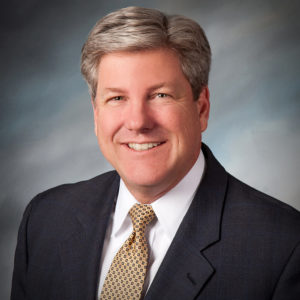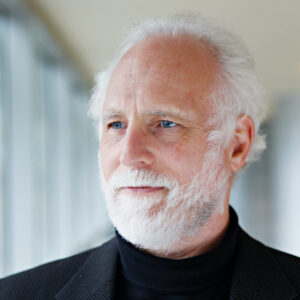By Knut Rostad
Avoiding or managing conflicts of interest is, arguably, the center piece of a fiduciary’s responsibility and the glue in an advisor/client relationship of trust and confidence. At least this is what one might surmise from the investment professionals who advised Congress as it crafted the Advisers Act of 1940, or the Supreme Court 1963 Capital Gains Research decision or, to fast forward, clear guidance that is offered by the SEC today.
It is in this background context that the more recent barrage of fiduciary-sounding promises from lobby groups or firms with new-found fidelity to the centuries-old law are particularly important. While SIFMA fervently claims, in its “Framework for Rulemaking,” that it advocates for a new fiduciary standard that is in the best interest of investors, a simple reading of its own detailed explanation of what its standard means suggests otherwise. It advocates, in some instances quite directly, to merely apply provisions of the suitability standard, a standard that fails to meet the Dodd-Frank requirement that it be “no less stringent” than the Advisers Act.
(NOTE: There’s no question as to how stringent Dodd Frank requires a new uniform fiduciary standard to be. It must be “no less stringent” than the Advisers Act. Yet, as a new uniform standard need not be an overlay of the Advisers Act, there are questions as to how best to achieve this “no less stringent” standard.)
A newer voice that shouts fiduciary fidelity is the dually registered firm, Hightower Advisors. On its website, HighTower states that its mission is to “restore confidence with investors who have lost confidence in the traditional model,” that “when you work with us, you work with advisors who measure themselves against enduring standards,” and “HighTower operates on fiduciary principles.”
Elliot Weissbluth, HighTower’s charismatic CEO, spoke last week at the MarketCounsel RIA conference about the firm’s growth and success in attracting high-end teams of wire house brokers to its philosophy of independent advice with fewer conflicts than full service brokerages impose. Elliot is not a typical speaker; he is a speaker’s speaker, exuding energy, enthusiasm and command of his topic.
So it was a bit of a surprise to hear Weissbluth state in his presentation before some 200 investment professionals that the HighTower business model meant HighTower advisors had “zero conflicts of interest.” I turned to my colleague sitting next to me and asked, “Did he say ‘zero conflicts of interest?'” Before he could respond, Weissbluth said, again, as he was finishing his presentation HighTower advisors had “zero conflicts of interest.”
During the question and answer section, I asked Weissbluth what he meant by “zero conflicts of interest.” I prefaced my question with the observation that, in the eyes of the SEC, while all advisors should seek to avoid and minimize conflicts, no advisor is conflict free. He replied that what he meant was that his advisors avoid the conflicts in the wire houses of multi compensation, “We don’t get paid twice,” according to an RIABiz article reporting on this same conference. I then followed with “you do not literally mean zero conflicts of interest?” He replied, according to RIA Biz, “you are always going to have some technical conflicts.”
In simply declaring (without explanation) HighTower has “Zero conflicts of interest” and then, only under questioning, explaining what he meant (“we don’t get paid twice”) and then, casually offering what appears to be a new regulatory notion that certain conflicts are not real conflicts, but “technical conflicts,” Weissbluth apparently provides a first hand demonstration of what, in part, it means to him be a fiduciary under the Advisers Act.
It appears to mean: It’s OK to make a material and clearly false statement (in front of about 200 investment professionals) about a core fiduciary issue; then partly acknowledge it was a false statement while, simultaneously, also seeming to defend it by suggesting a new regulatory concept; i. e.: the difference between “conflicts” and “technical conflicts.”
Hightower says it seeks to restore investor confidence; while SIFMA says its “Framework” adheres to Dodd Frank’s mandate that brokers will “act in the best interest of the customer.” Yet, how each defines “fiduciary” or interprets “best interest” starkly contrasts with how jurists and regulators have articulated the fiduciary standard and the key duties of loyalty and due care.
How stark a contrast? A comparison in the evolution of another branch of the law is useful. SIFMA’s “framework” is every bit at odds with the Dodd Frank requirement, as the 2005 Supreme Court Kelo V City of New London decision is viewed by many as at odds with established law on property rights.
The fiduciary standard is under enormous pressure to become a commercial sales standard. If it is to survive, the profession and its leaders will have to protect it. This may not be as entirely daunting a task as it may seem. Small steps can have large impacts. A place to begin is to urge Elliot Weisbluth, whose HighTower Advisors may become the new face of fiduciary, to acknowledge he has erred, his business model is not perfect, with more than “zero” conflicts of interest that are not “technical.”
———————————————————————–
Update:
Charles Paikert, Editor of Registered Rep.’s Wealth Management Letter, recently wrote a related article on his blog, Wealth Business Observer.

